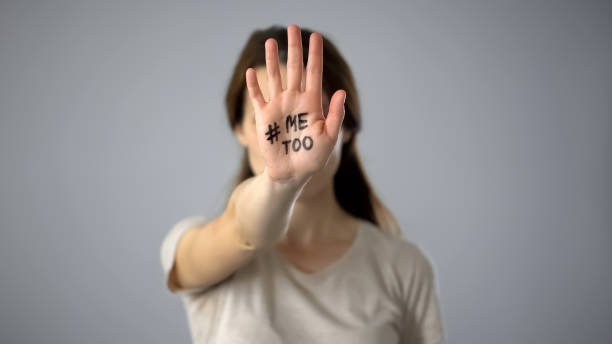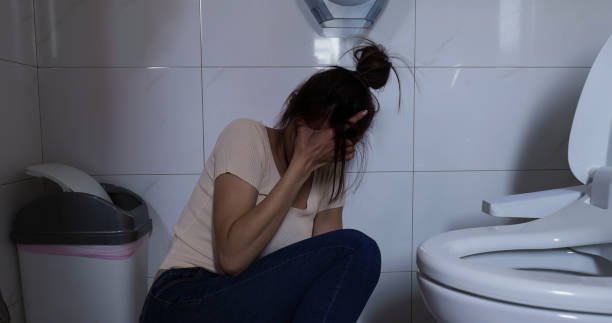
Sexual Assault, Domestic Violence. 5 Major Platforms Help Victims Rebuild Physically and Mentally
When the #MeToo movement (anti-sexual assault movement) started in Hollywood due to multiple sex scandals, it spread to the world. Issues such as “sexual assault” and “sexual harassment” have once again attracted everyone’s attention.
When faced with victims who have been sexually assaulted or experienced a violation of their sexual autonomy and developed post-traumatic stress disorder, or even faced trauma themselves, how should we help the victims around us get over the shadow of sexual assault and trauma? When the unspeakable pain brings the victim to the verge of collapse, who can he turn to for help? We work with you to extend a helping hand and assist the women around you who need strength to rebuild their bodies and minds.
According to government statistics, it is estimated that 0.5 per cent of females report being a victim of the most serious offences of rape or sexual assault by penetration in the previous 12 months, equivalent to around 85,000 victims on average per year. Among males, less than 0.1 per cent (around 12,000) report being a victim of the same types of offences in the previous 12 months.

Statistics on sexual assault cases: Up to 90% of perpetrators are friends
Around one in twenty females (aged 16 to 59) reported being a victim of a most serious sexual offence since the age of 16. Extending this to include other sexual offences such as sexual threats, unwanted touching or indecent exposure, this increased to one in five females reporting being a victim since the age of 16. The highest proportion of suspects and victims are friends, including family members, friends, boyfriends and girlfriends, ordinary friends, classmates, and neighbors. The male criminal population and the female victim population of the crime of violating sexual autonomy are mostly in the age range of 12 to 17 years old, and more than 90% of the suspects and the victims are acquaintances. It shows that the perpetrator is actually a friend who has a basic degree of trust hidden in the victim’s life, so that the victim lowers his guard and leads to tragedy.
When victims of sexual assault, coercion of sexual autonomy, or even domestic violence finally have the courage to come forward to testify and reveal the pain that has been hidden for a long time, because the victims of sexual assault are often still in the great fear and fear that they experienced when they were coerced. She suffers from strong emotions such as shame and fear of being judged by others and suffers from trauma.
What is sexual assault?
The following behaviors fall within the scope of “sexual assault”:
- The act of forcing others to have sexual intercourse against their will and when they do not know how to resist.
Serious sexual assaults include sexual intercourse, oral sex, ejaculation, sexual organ contact, and sexual indecency. - Other minor offenses include showing pornographic pictures, verbal sexual harassment, forced viewing of pornographic videos, constant touching of female (male) bodies, voyeurism, etc., which can all be considered as sexual assaults.
- There are five types of violations subdivided according to the degree of violation: sexual teasing or gestures, inappropriate touching, sexual reward, threatening sexual coercion, and rape.
The victim has a deep emotional black hole, and relatives and friends are worried about suffering from “vicarious trauma”
Although victims of sexual assault or domestic violence are in urgent need of relevant support, their relatives and friends are often as anxious and emotional as the victims; because relatives and friends often do not know how to assist the victims, are ignorant of relevant laws, and feel uncertain about judicial decisions. , worrying about the surrounding eyes, and even reacting with extreme anxiety about the safety of the surrounding environment, etc., can also form the so-called “vicarious trauma”.
Vicarious trauma is not only caused by a single incident. In addition to accumulating day by day in the process of assisting the victim, and accumulating and aggravating due to changes in the internal process, if relatives and friends assisting the victim fail to be aware of their own status in time and adjust appropriately during the process, Symptoms of “vicarious trauma” such as emotional exhaustion, depression, and anxiety may occur, causing the victim and relatives and friends around her to simultaneously fall into uncontrollable negative emotions, thereby affecting life, work, and social functions.

5 major platform resources emerge from the haze
- Rape Crisis England & Wales
Rape Crisis England & Wales is the feminist charity working to end sexual violence and abuse. They are also the membership organisation for Rape Crisis centres across England and Wales. Together with our 39 member centres, they work to deliver specialist services to those affected by sexual violence and abuse, and aim to educate, influence and make change. - Safeline
Since its conception in 1994, Safeline has been working hard towards the prevention of sexual abuse and to help support those who have been affected. They provide a wide range of services including:- Counselling services, via phone, online, or face to face. This includes therapies like drama or art therapy.
- Independent Sexual Violence Advisors (ISVAs). These advisors offer support to those who have reported their abuse to the police.
- Online, text, and telephone helplines. These are available for those seeking information, advice, or support following their sexual abuse or rape. It can also be used by those who know someone who has been affected.
- Projects focusing on prevention such as mentoring and support groups. They also offer training so that others can help with prevention of sexual in their communities.
- NSPCC
The NSPCC is the biggest charity in the UK that is focussed on dealing with and preventing the abuse of children and cruelty towards children. Though the NSPCC is not focussed solely on sexual abuse for children, that is a big part of what they deal with. As the NSPCC states on their website, 1 in 20 children in the UK have been sexual abused. They have also created this helpful guide on what constitutes sexual child abuse. The organisation has helped lots of families in the UK through their telephone helplines, which enable those children who have experienced sexual abuse to speak to someone in confidence. - Survivors UK – Male rape and sexual abuse
Survivors UK is a UK organisation focused on helping males who have been the victim of rape or sexual abuse. They are dedicated to raising awareness around the fact that males can also suffer from this experience. Based in East London, their services include a national helping, individual counselling, and group counselling sessions. They also offer training to those organisations that are working with adult male survivors of sexual abuse. - The Survivors Trust
The Survivors Trust is one of the biggest sexual abuse organisations in the UK. Their core aim is to support and empower who have survived rape and sexual abuse at any point in their lives. They try to achieve this by awareness raising, and providing a voice and networking opportunities for their members.Under the umbrella of The Survivors Trust are 130 specialist organisations that have been set up to support those who have experienced sexual abuse across the UK and Ireland. These member organisations are focused on providing direct services for survivors, including counselling, helplines, and advocacy services. They are not restricted to any gender or age.












